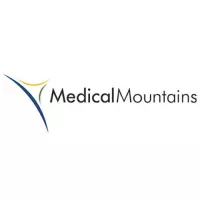
Tuttlingen – To which risk class can or must a specific medical device be assigned? The regulatory requirements allow for different interpretations and sometimes leave manufacturers at a loss. The free classification consultation day offered for the first time by MedicalMountains GmbH with Prof. Dr. medical Michael D'Agosto on June 29th.
Michael D'Agosto has accepted the call to Furtwangen University, Tuttlingen campus, and will hold the professorship for medical technology with a focus on product approval from the summer semester 2021. Previously head of the Clinical Affairs & Post-Market Surveillance department at Karl Storz SE & Co. KG, he can understand that medical technology companies can have difficulty evaluating their products. We asked him three questions in the run-up to the consultation day.
- Mr. D'Agosto, the EU MDR provides classification rules in Annex VIII. Nevertheless, there are uncertainties and different readings within the industry. Is the MDR grid too broad to cover the entire spectrum of medical devices?
The variety of products in the medical technology industry is known to be particularly large. It ranges from walking aids and bandages to medical carbon dioxide and stand-alone software to surgical instruments, endoprostheses and cardiac pacemakers to magnetic resonance tomography systems, to name just a few. The 18 risk classification rules already defined in the Medical Devices Directive 93/42/EEC (MDD) have been revised in some places with the Medical Devices Regulation 2017/745 (MDR) and new rules have been added. A complete revision of the rules would have led to a disproportionately high effort for the reclassification of the products and would certainly not have been accepted by the manufacturers, among other things. And it remains questionable whether all products could then have been taken into account, especially in such an innovative industry. So we currently have 22 rules that should cover the entire spectrum. It can be seen that a simple algorithm is hardly applicable here. There are different possible readings for every regulation, standard or guideline, i.e. there is room for interpretation. The classification rules aim to enable an application-related, risk-based classification. From the point of view of this recital, appropriate arguments should be developed in the event of uncertainties in order to convincingly justify the decision. In case of doubt, a discussion can be sought with the notified body, and the MDR also explicitly mentions the possibility of contacting the competent authority.
- If specific questions about classification are addressed to you at the consultation day: What information do you need from the manufacturers in order to be able to give the best possible assessment?
There is a whole range of information that is helpful. These are first of all the designation of the product or the product category or group and the intended purpose. If applicable and if known, codes such as EMDN/CND and indication or contraindication. Other promised services from other product-related information, such as marketing documents and videos, must be taken into account. Likewise the question of software and the combination with other products.
The duration and location of the application then play a part in the assessment, and whether an application is intended to come into contact with the central circulatory or nervous system. Is it a reusable surgical instrument, a sterile product or an active medical device? Does it have a measurement function? Is it used to control, regulate or monitor other products? The listing is not complete. There are a few more aspects that influence the classification.
- At the Tuttlingen campus, you will focus on product approval as part of your medical technology professorship. What exactly does this mean?
The focus deals with the country-specific requirements that are placed on medical devices in regulated markets in order to be able to place them on the market. In terms of teaching, this means that we want to enable students on the Tuttlingen university campus to understand the regulations and meet the requirements. In this environment, in addition to teaching, there is also a need for research with regard to providing evidence of safety, performance or clinical benefit,





